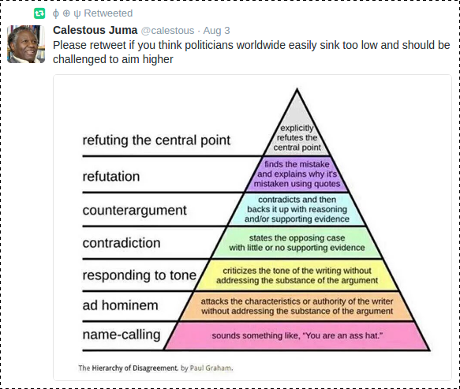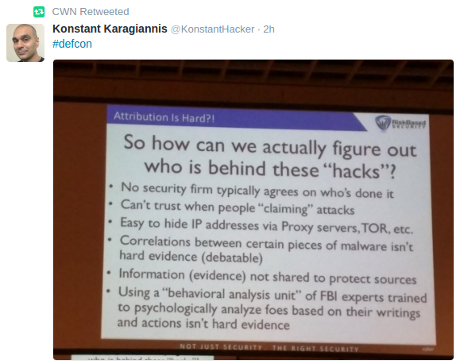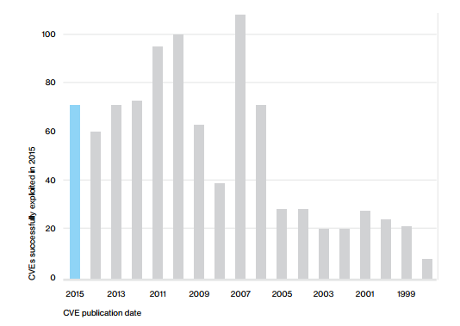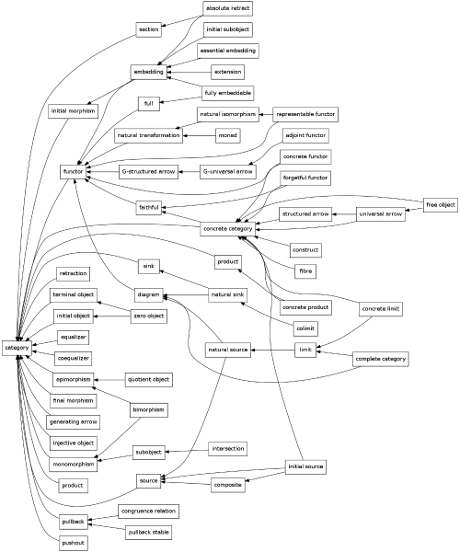With Donald Trump’s remarks today, you know that discussions of stochastic terrorism are about to engulf social media.
Anticipating that, I tried to run down some facts on the usage of “stochastic terrorism.”
As a starting point, Google NGrams comes up with zero (0) examples up to the year 2000.
One blog I found, named appropriately, Stochastic Terrorism, has only one post from January 26, 2011, may have the same author as: Stochastic Terrorism: Triggering the shooters (Daily Kos, January 10, 2011) with a closely similar post: Glenn Beck- Consider yourself on notice *Pictures fixed* (Daily Kos, July 26, 2011). The January 10, 2011 post may be the origin of this phrase.
The Corpus of Contemporary American English, which is complete up to 2015, reports zero (0) hits for “stochastic terrorism.”
NOW Corpus (News on the Web) reports three (3) hits for “stochastic terrorism.”
July 18, 2016 – Salon. All hate is not created equal: The folly of perceiving murderers like Dylann Roof, Micah Johnson and Gavin Long as one and the same by Chauncey DeVega.
Dylann Roof was delusional; his understanding of reality colored by white racial paranoiac fantasies. However, Roof was not born that way. He was socialized into hatred by a right-wing news media that encourages stochastic terrorism among its audience by the repeated use of eliminationist rhetoric, subtle and overt racism against non-whites, conspiracy theories, and reactionary language such as “real America” and “take our country back.”
In case you don’t have the context for Dylann Roof:
Roof is a white supremacist. Driven by that belief, he decided to kill 9 unarmed black people after a prayer meeting in Charleston, North Carolina’s Ebenezer Baptist Church. Roof’s manifesto explains that he wanted to kill black people because white people were “oppressed” in their “own country,” “illegal immigrants” and “Jews” were ruining the United States, and African-Americas are all criminals. Like other white supremacists and white nationalists (and yes, many “respectable” white conservatives as well) Roof’s political and intellectual cosmology is oriented around a belief that white Americans are somehow marginalized or treated badly in the United States. This is perverse and delusional: white people are the most economically and politically powerful racial group in the United States; American society is oriented around the protection of white privilege.
“Stochastic terrorism” occurs twice in:
December 7, 2015 The American Conservative. The Challenge of Lone Wolf Terrorism by Philip Jenkins.
Jenkins covers at length “leaderless resistance:”
…
Amazingly, the story goes back to the U.S. ultra-Right in the 1980s. Far Rightists and neo-Nazis tried to organize guerrilla campaigns against the U.S. government, which caused some damage but soon collapsed ignominiously. The problem was the federal agencies had these movements thoroughly penetrated, so that every time someone planned an attack, it was immediately discovered by means of either electronic or human intelligence. The groups were thoroughly penetrated by informers.
The collapse of that endeavor led to some serious rethinking by the movement’s intellectual leaders. Extremist theorists now evolved a shrewd if desperate strategy of “leaderless resistance,” based on what they called the “Phantom Cell or individual action.” If even the tightest of cell systems could be penetrated by federal agents, why have a hierarchical structure at all? Why have a chain of command? Why not simply move to a non-structure, in which individual groups circulate propaganda, manuals and broad suggestions for activities, which can be taken up or adapted according to need by particular groups or even individuals?
…
The phrase stochastic terrorism occurs twice, both in a comment:
Are they leaderless resistance tactics or is this stochastic terrorism? Stochastic terrorism is the use of mass communications/media to incite random actors to carry out violent or terrorist acts that are statistically predictable but individually unpredictable. That is, remote-control murder by lone wolf. This is by no means the sole province of one group.
The thread ends shortly thereafter with no one picking up on the distinction between “leaderless resistance,” and “stochastic terrorism,” if there is one.
I don’t have a publication date for Stochastic Terrorism? by Larry Wohlgemuth, the lack of dating on content a rant for another day, which says:
Everybody was certain it would happen, and in the wake of the shooting in Tucson last week only the most militant teabagger was able to deny that incendiary rhetoric played a role. We knew this talk of crosshairs, Second Amendment remedies and lock and load eventually would have repercussions, and it did.
Only the most obtuse can deny that, if you talk long enough about picking up a gun and shooting people, marginal personalities and the mentally ill will respond to that suggestion. Feebleminded and disturbed people DO exist, and to believe these words wouldn’t affect them seemed inauthentic at best and criminal at worst.
Now that the unthinkable has happened, people on the left want to shove it down the throats of wingers that are denying culpability. Suddenly, like Manna from heaven, a radical new “meme” was gifted to people intended to buttress their arguments that incendiary rhetoric does indeed result in violent actions.
It begs the question, what is stochastic terrorism, and how does it apply to the shooting in Tucson.
This diary on Daily Kos by a member who calls himself G2geek was posted Monday, January 10, two days after the tragedy in Tucson. It describes in detail the mechanisms whereby “stochastic terrorism” works, and who’s vulnerable to it. Here’s the diarist’s own words in explaining stochastic terrorism:
…
Which puts the original of “stochastic terrorism” back the Daily Kos, January 10, 2011 post, Stochastic Terrorism: Triggering the shooters, which appeared two days after U.S. Representative Gabrielle Giffords and eighteen others were shot in Tuscon, Arizona.
As of this morning, a popular search engine returns 536 “hits” for “stochastic terrorist,” and 12,300 “hits” for “stochastic terrorism.”
The term “stochastic terrorism” isn’t a popular one, perhaps it isn’t as easy to say as “…lone wolf.”
My concern is the potential use of “stochastic terrorism” to criminalize free speech and to intimidate speakers into self-censorship.
Not to mention that we should write Privilege with a capital P when you can order the deaths of foreign leaders and prosecute anyone who suggests that violence is possible against you. Now that’s Privilege.
Suggestions on further sources?










